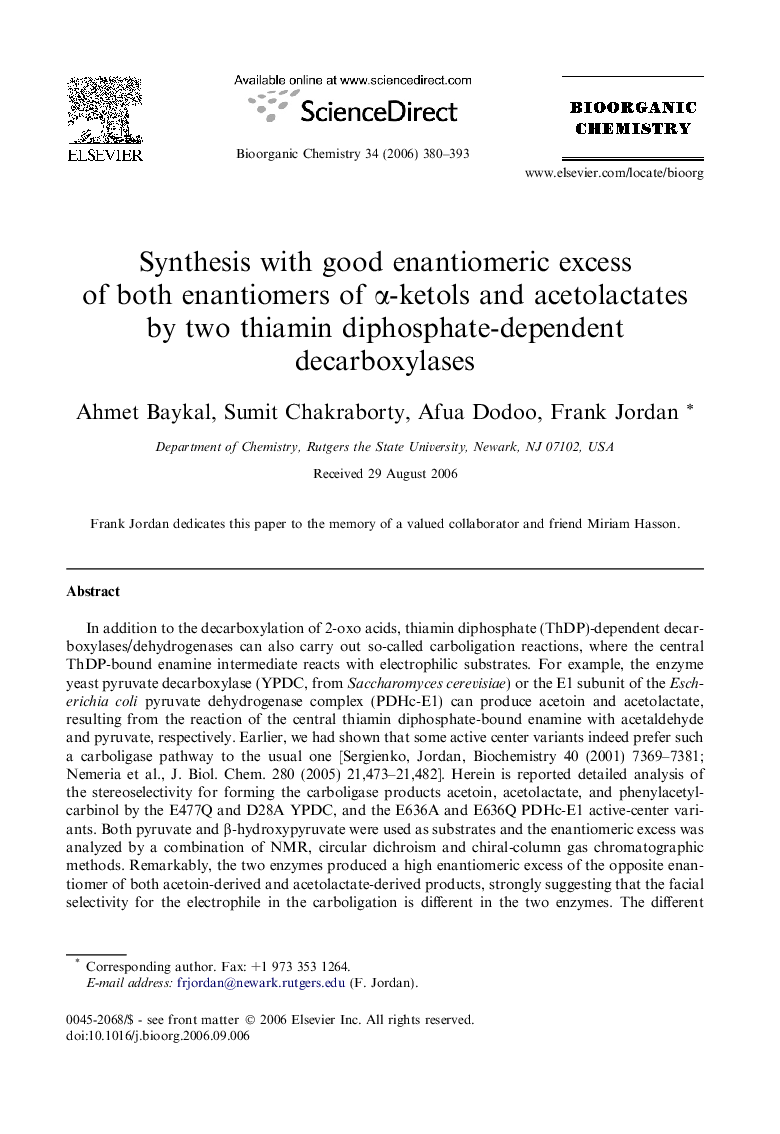| کد مقاله | کد نشریه | سال انتشار | مقاله انگلیسی | نسخه تمام متن |
|---|---|---|---|---|
| 1356243 | 981102 | 2006 | 14 صفحه PDF | دانلود رایگان |

In addition to the decarboxylation of 2-oxo acids, thiamin diphosphate (ThDP)-dependent decarboxylases/dehydrogenases can also carry out so-called carboligation reactions, where the central ThDP-bound enamine intermediate reacts with electrophilic substrates. For example, the enzyme yeast pyruvate decarboxylase (YPDC, from Saccharomyces cerevisiae) or the E1 subunit of the Escherichia coli pyruvate dehydrogenase complex (PDHc-E1) can produce acetoin and acetolactate, resulting from the reaction of the central thiamin diphosphate-bound enamine with acetaldehyde and pyruvate, respectively. Earlier, we had shown that some active center variants indeed prefer such a carboligase pathway to the usual one [Sergienko, Jordan, Biochemistry 40 (2001) 7369–7381; Nemeria et al., J. Biol. Chem. 280 (2005) 21,473–21,482]. Herein is reported detailed analysis of the stereoselectivity for forming the carboligase products acetoin, acetolactate, and phenylacetylcarbinol by the E477Q and D28A YPDC, and the E636A and E636Q PDHc-E1 active-center variants. Both pyruvate and β-hydroxypyruvate were used as substrates and the enantiomeric excess was analyzed by a combination of NMR, circular dichroism and chiral-column gas chromatographic methods. Remarkably, the two enzymes produced a high enantiomeric excess of the opposite enantiomer of both acetoin-derived and acetolactate-derived products, strongly suggesting that the facial selectivity for the electrophile in the carboligation is different in the two enzymes. The different stereoselectivities exhibited by the two enzymes could be utilized in the chiral synthesis of important intermediates.
Figure optionsDownload as PowerPoint slide
Journal: Bioorganic Chemistry - Volume 34, Issue 6, December 2006, Pages 380–393